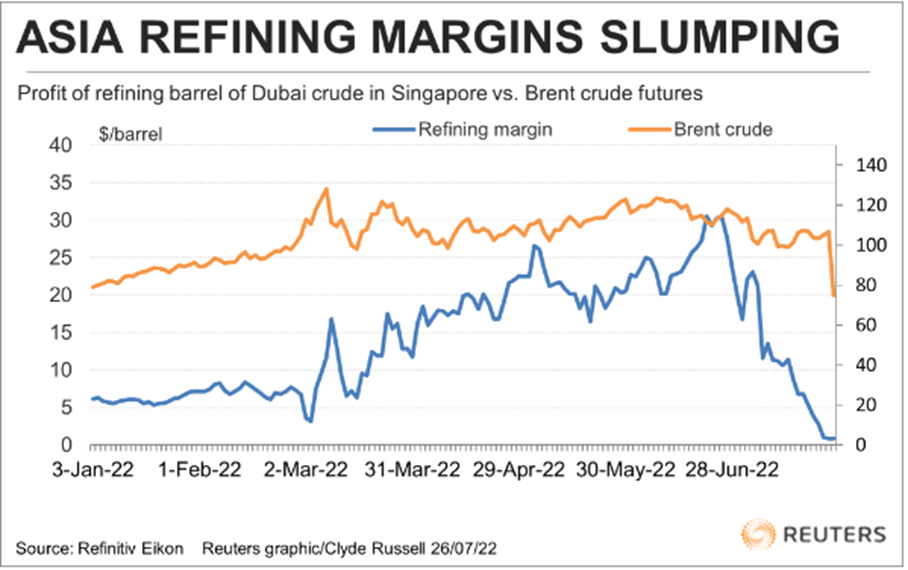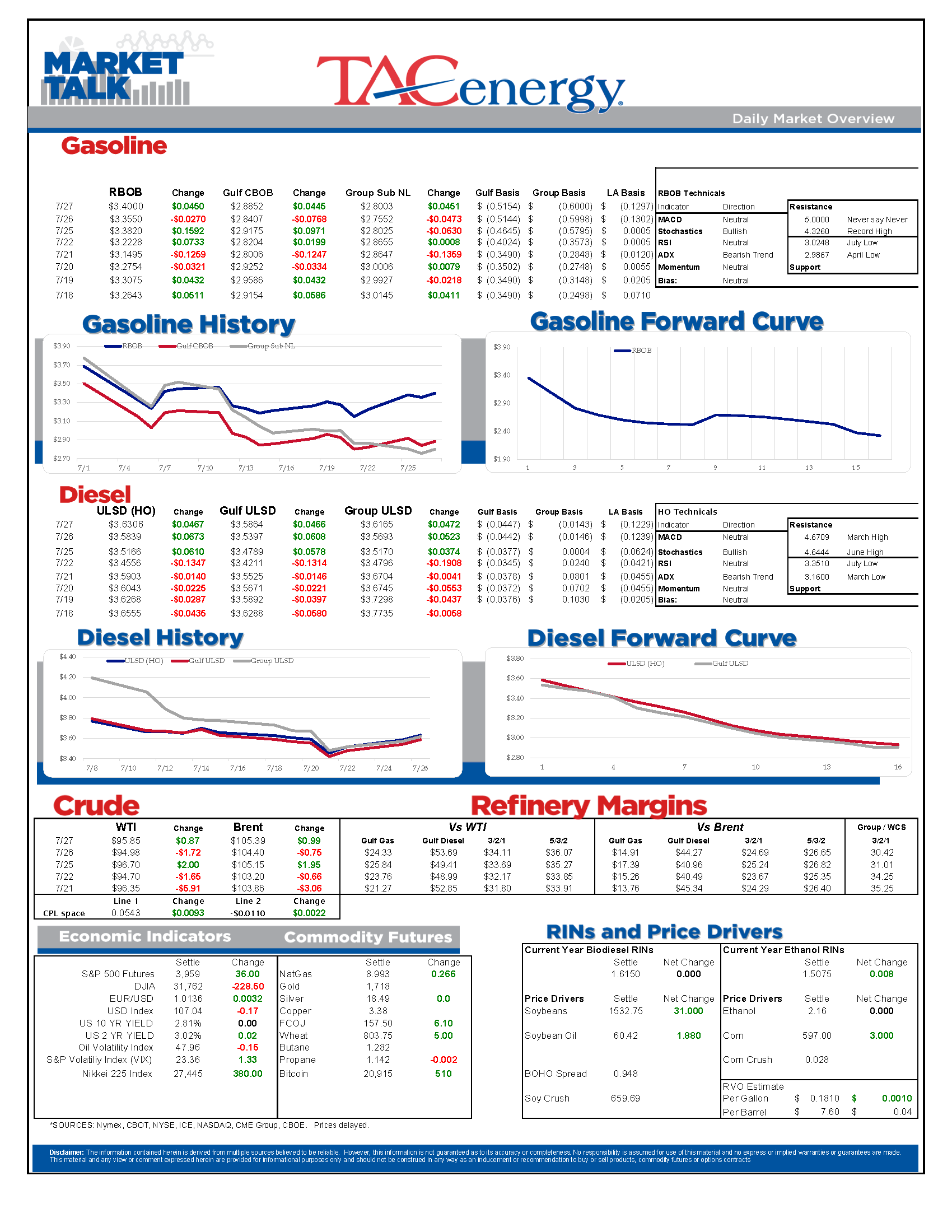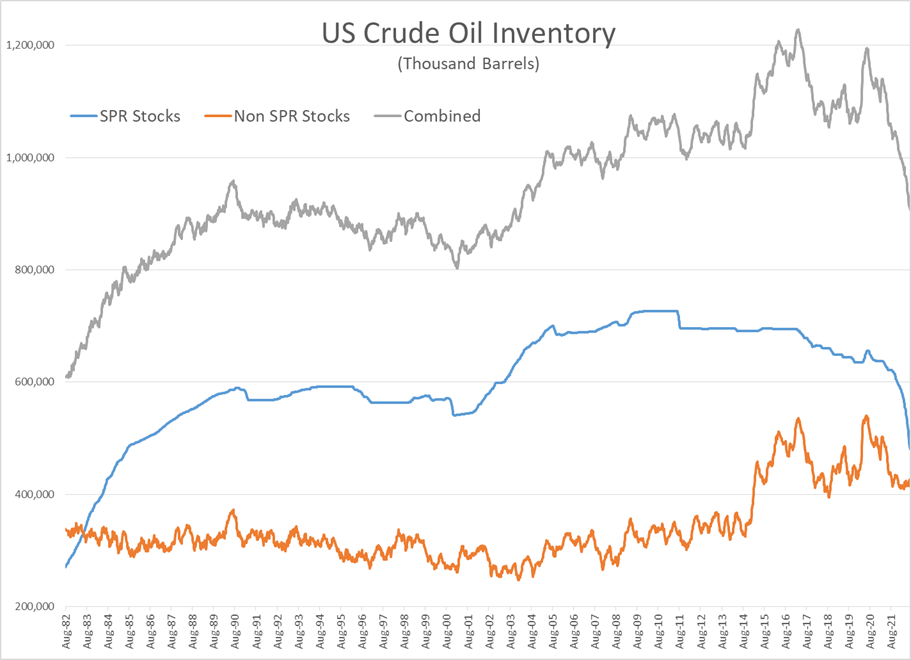The Choppy Action In Energy Markets Continues This Week

The choppy action in energy markets continues this week after a large reversal in gasoline and natural gas prices over the past 24 hours.
RBOB prices made a 45 cent run from the bottom end of their July range to the top in just 4 days, but were greeted by stiff resistance that knocked prices down 18 cents from their Tuesday morning high. The buyers are giving it another go this morning, with inventory draws, stronger equities and a weaker dollar all getting some of the credit for the early buying.
WTI has traded down to its 200 day moving average in each of the past 5 trading sessions, but has always managed to settle above that level. If sellers fail to break that mark (currently just above $94) that could be a springboard to the next push north of $100, while a break sets up a move below $90. ULSD is looking the most bullish of the NYMEX contracts, with the early move north of $3.60 making a run at $3.80 look more likely.
The API reported that US Oil stocks (outside of the SPR) dropped by 4 million barrels last week, while gasoline and distillates had small draws of 1 million and ½ million barrels respectively. The crude oil number seemed to have surprised many who estimated stocks would continue to hold relatively steady thanks to those SPR releases. The DOE’s weekly report is due out on its normal schedule of 9:30 central.
US Strategic Petroleum Reserve (SPR) stocks have dropped to their lowest level since 1985, with nearly 1 million barrels/day being released in recent months to prop up US and global supplies. The non-SPR inventories in the US are just barely hanging on despite these consistent injections, which has brought the combined total of US oil inventories down to its lowest level since 2004.
While much has been written about the boom in profits for refiners who were able to survive the fallout from COVID lockdowns and the global push to villainize fossil fuels, the global refining story is much more complex as some Asian facilities are now seeing their lowest margins since the early days of the pandemic.
A big reason for the plunge in profits in the Eastern hemisphere is China unleashed its refineries to ramp up their utilization and exports just in time for a major slump in regional gasoline and plastic-production demand. Another contributing factor is new refineries in Kuwait and Saudi Arabia are also now competing in the export market. In other words, while the Americas and Europe are struggling to keep supplied due to a lack of refining capacity, Asia is facing the opposite problem.
That phenomenon may be a key contributor in West Coast cash markets trading below most of their counterparts in the eastern half of the US, which is a relatively rare occurrence given the more stringent specs and limited shipping infrastructure west of the Rockies.
Click here to download a PDF of today's TACenergy Market Talk.
Latest Posts
Week 16 - US DOE Inventory Recap
Energy Markets Trading Quietly In The Red As Ethanol Prices Rally To Five-Month High
The Struggle For Renewable Producers Continues As A Rapid Influx Of Supply And Crashing Credit Prices Make Biodiesel
After Years Of Backwardation, Diesel Prices Have Slipped Into Contango Over The Past Week
Social Media
News & Views
View All
Week 16 - US DOE Inventory Recap

Energy Markets Trading Quietly In The Red As Ethanol Prices Rally To Five-Month High
Energy markets are trading quietly in the red to start Wednesday’s session after a healthy bounce Tuesday afternoon suggested the Israel-Iran-linked liquidation had finally run its course.
There are reports of more Ukrainian strikes on Russian energy assets overnight, but the sources are sketchy so far, and the market doesn’t seem to be reacting as if this is legitimate news.
Ethanol prices have rallied to a 5-month high this week as corn and other grain prices have rallied after the latest crop progress update highlighted risks to farmers this year, lower grain export expectations from Ukraine, and the approval of E15 blends this summer despite the fact it pollutes more. The rally in grain and renewables prices has also helped RIN values find a bid after it looked like they were about to test their 4-year lows last week.
The API reported small changes in refined product inventories last week, with gasoline stocks down about 600,000, while distillates were up 724,000. Crude oil inventories increased by 3.2 million barrels according to the industry-group estimates. The DOE’s weekly report is due out at its normal time this morning.
Total reported another upset at its Port Arthur refinery that’s been a frequent flier on the TCEQ alerts since the January deep freeze knocked it offline and damaged multiple operating units. This latest upset seems minor as the un-named unit impacted was returned to normal operations in under an hour. Gulf Coast basis markets have shrugged off most reports of refinery upsets this year as the region remains well supplied, and it’s unlikely we’ll see any impact from this news.
California conversely reacted in a big way to reports of an upset at Chevron’s El Segundo refinery outside of LA, with CARBOB basis values jumping by more than a dime. Energy News Today continued to show its value by reporting the upset before the flaring notice was even reported to area regulators, proving once again it’s ahead of the curve on refinery-related events. Another industry news outlet meanwhile struggled just to remember where the country’s largest diesel seller is located.
Click here to download a PDF of today's TACenergy Market Talk

The Struggle For Renewable Producers Continues As A Rapid Influx Of Supply And Crashing Credit Prices Make Biodiesel
The sigh of relief selloff continues in energy markets Tuesday morning, with gasoline prices now down more than 20 cents in 7 sessions, while diesel prices have dropped 26 cents in the past 12. Crude oil prices are within a few pennies of reaching a 1 month low as a lack of headlines from the world’s hot spots allows some reflection into the state of the world’s spare capacity for both oil and refined products.
Gasoline prices are trading near a 6-week low this morning, but still need to fall about another nickel in order to break the weekly trendline that pushed prices steadily higher since December. If that trend breaks, it will be safer to say that we saw the end of the spring gasoline rally on April 12th for the 2nd year in a row. Last year RBOB futures peaked on April 12 at $2.8943 and bottomed out on May 4th at $2.2500. The high (at this point) for this year was set on April 12th at $2.8516, and the low overnight was $2.6454.
It’s not just energy commodities that are seeing an unwind of the “flight to safety” trade: Gold prices had their biggest selloff in 2 years Monday and continue to point lower today. Just how much money poured into commodities in the weeks leading up to the direct confrontation between Israel and Iran is unclear, but we have seen in year’s past that these unwind-events can create a snowball effect as traders can be forced to sell to cover their margin calls.
Supply > Demand: The EIA this morning highlighted the record setting demand for natural gas in the US last year, which was not nearly enough to offset the glut of supply that forced prices to a record low in February. A shortage of natural gas in Europe was a key driver of the chaotic markets that smashed just about every record in 2022, and an excess of natural gas supply in Europe and the US this year is acting as a buffer, particularly on diesel prices.
The struggle for renewable producers continues as a rapid influx of supply and crashing credit prices make Biodiesel, RD and SAF unprofitable for many. In addition to the plant closures announced in the past 6 months, Vertex Energy reported Monday it’s operating its Renewable Diesel facility in Mobile AL at just 50% of capacity in Q1. The truly scary part for many is that the $1/gallon Blender's tax credit ends this year and is being replaced by the “Clean” Fuel production credit that forces producers to prove their emissions reductions in order to qualify for an increased subsidy. It’s impossible to say at this point how much the net reduction will be for domestic producers, but importers will get nothing, and at current CI values, many biodiesel producers may see their “blend credit” cut by more than half.
Click here to download a PDF of today's TACenergy Market Talk.


